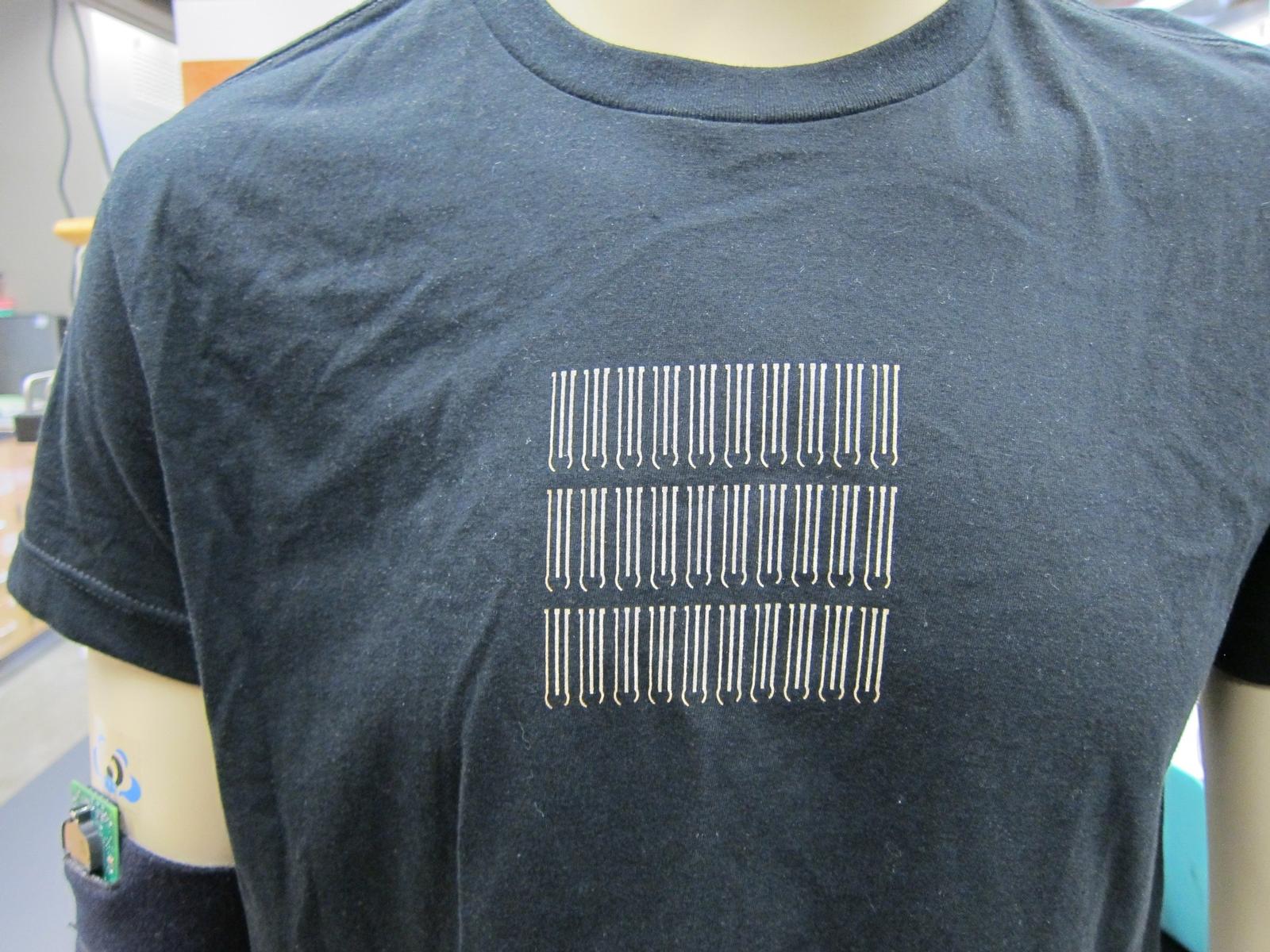‘Smart clothes’ for personalized cooling and heating
July 14, 2015

Garment-based printable electrodes (credit: UC San Diego)
Instead of heating or cooling your whole house, imagine a fabric that will keep your body at a comfortable temperature — regardless of how hot or cold it actually is.
That’s the goal of an engineering project called ATTACH (Adaptive Textiles Technology with Active Cooling and Heating) at the University of California, San Diego, funded with a $2.6M grant from the U.S. Department of Energy’s Advanced Research Projects Agency – Energy (ARPA-E).
By regulating the temperature around an individual person, rather than a large room, the smart fabric could potentially cut the energy use of buildings and homes by at least 15 percent, said project leader Joseph Wang, distinguished professor of nanoengineering at UC San Diego.
“In cases where there are only one or two people in a large room, it’s not cost-effective to heat or cool the entire room,” said Wang. “If you can do it locally, like you can in a car by heating just the car seat instead of the entire car, you can save a lot of energy.”
Skin temperature
The smart fabric will be designed to regulate the temperature of the wearer’s skin — keeping it at 93° F — by adapting to temperature changes in the room. When the room gets cooler, the fabric will become thicker. When the room gets hotter, the fabric will become thinner, using polymers inside the smart fabric that expand in the cold and shrink in the heat.
“93° F is the average comfortable skin temperature for most people,” added Renkun Chen, assistant professor of mechanical and aerospace engineering at UC San Diego, and one of the collaborators on this project.
The clothing will incorporate printable “thermoelectrics” into specific spots of the smart fabric to regulate the temperature on “hot spots” — such as areas on the back and underneath the feet — that tend to get hotter than other parts of the body when a person is active.
Saving energy
“With the smart fabric, you won’t need to heat the room as much in the winter, and you won’t need to cool the room down as much in the summer. That means less energy is consumed,” said Chen.
The researchers are also designing the smart fabric to power itself, using rechargeable batteries to power the thermoelectrics and biofuel cells that can harvest electrical power from human sweat.
The 3-D printable wearable parts will be thin, stretchable, and flexible to ensure that the smart fabric is not bulky or heavy. The material will also be washable, stretchable, bendable and lightweight.
“We also hope to make it look attractive and fashionable to wear,” said Wang.